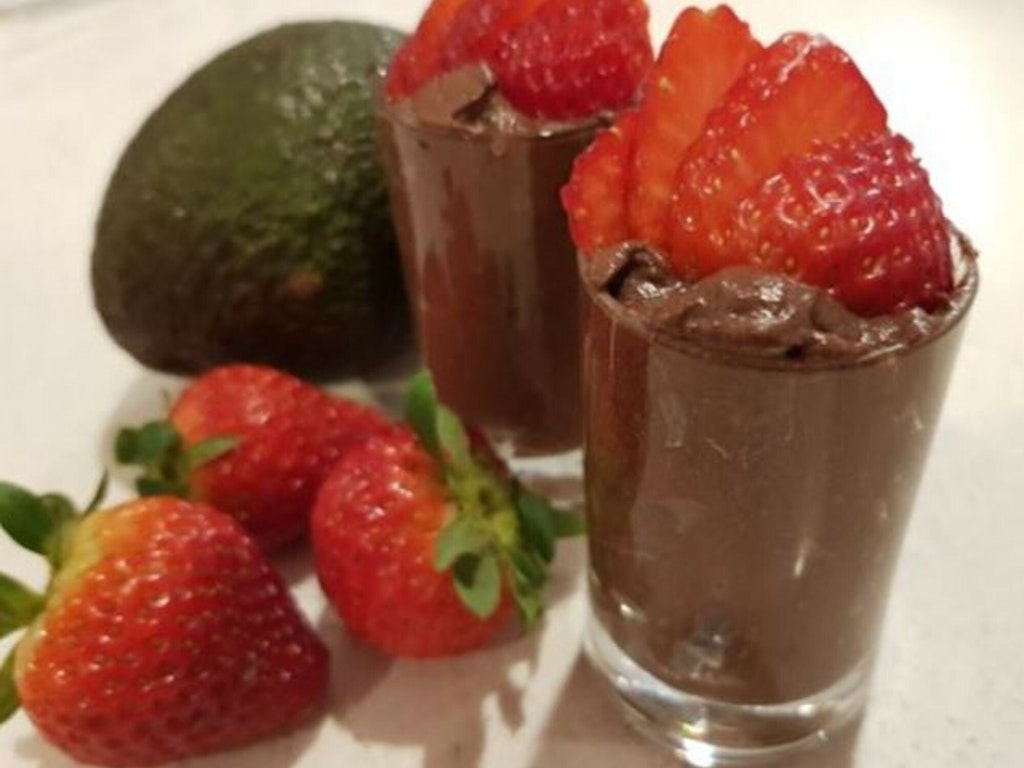Making Easter meals inclusive for older family members
Holidays like Easter are usually a time to spend with family and food can be a big focus of the day. However, older people may have different dietary requirements than they did previously, which can make it hard for them to enjoy the foods they used to.
- Jump To Section:
- Glorious food •
- Considerations for making food •
- What time is dinner? •
- Food and wellbeing
![Dietary needs are important all year round! [Source: Shutterstock]](https://agedcareguide-assets.imgix.net/news/articles/wp/bHa8hOcl-Eastereggsold__2601.jpg?fm=pjpg&w=700&format=auto&q=65)
Dietary needs are important all year round! [Source: Shutterstock]
Key points:
- You should be checking in with your older family members about any new dietary requirements or changes
- Small changes, like adding gravy to roasts, can make food more manageable for older people to eat
- Food can foster connections and bring back memories for many older family members
An older person may find themselves unable to eat certain foods because their body doesn’t process it well or they have new difficulties from recently developed health conditions.
Accredited Practising Dietitian Leanne Elliston, Senior Dietitian and Executive Officer at Nutrition Australia ACT, says that coming up to holidays, families need to consider any food and nutrition concerns in their older loved ones, whether it is chewing and swallowing issues or special diets.
“Everyone’s dietary needs are a very individual thing. And the first thing is to be mindful and not hesitate in asking those people you might be catering for about any foods they can no longer handle,” says Ms Elliston.
“I think sometimes the younger generation might get caught up in what they enjoy and like and don’t necessarily take into consideration the changing food requirements of our grandparents [or parents].”
Glorious food
Food can be a really important part of connecting with others during the holidays and can be a good driver for reminiscing for older people.
Executive Chef at Baptistcare WA, Todd Cheavins, explains that food can involve family Easter tradition, bring up fond memories, and even connect older people with their family and friends.
“Food for family members around Easter needs to be something that [older people] are happy with and give them an opportunity to participate in a festive experience,” says Mr Cheavins.
“It is so important that the food that is served to residents and older people at Easter brings back memories of their younger years and the times that they celebrate with their family members. There is a connection between food and special events and family and memories.”
While some older people tend to lose interest in food when they get older, Ms Elliston finds that special occasions can be a good way to invigorate interest in food through family connections.
Considerations for making food
Ms Elliston recommends that families talk to their older loved ones prior to the holidays about any changes in diet or condition that may make it hard for them to either eat food or process food.
She explains that diabetes is a very common condition among older people, which may mean a low GI diet.
Additionally, texture can be a big food factor for older people. Conditions like dysphagia can impact the ability to chew and swallow, and dentures or brittle teeth may rule out crunchy food, like hard chocolates.
To help with issues like this, Ms Elliston recommends getting creative and making small adjustments that can make food easier to consume.
For example, if you are planning a roast for Easter, make sure the roast is accompanied by a gravy of some kind, as it can make swallowing a lot easier for older people.
If cake and chocolate is on the menu, she suggests switching out cream for custard or yogurt, as they are healthier alternatives.
Ms Elliston also recommends older people eat dark chocolate over milk or white chocolate, as it has greater polyphenol and antioxidant content, and it also has a stronger and more intense flavour that works well on older people’s taste buds.
“With an ageing society, we have to consider that our loved ones and their dietary needs are changing, and what they used to eat and enjoy is not always the same, so we have got to check in with them and see,” says Ms Elliston.
What time is dinner?
Another consideration for organising holiday events is when you are planning to host a family get together.
Ms Elliston explains that timing can be everything when it comes to food and can be very different from person to person.
“Usually it is better to have a family get together perhaps in the middle of the day rather than in the evening because appetite tends to be a little bit better then,” says Ms Elliston.
“Also, particularly among older people with reflux, eating in the evening can sometimes aggravate that as well.
“It’s such an individualistic thing. An important thing is to get to know the nutrition needs of the seniors that you might be catering for, whether they are following any particular diet and whether they need to have some textural modifications taken into account.”
Food and wellbeing
Mr Cheavins says it is important that older people feel catered for at family gatherings as food is important to everybody!
“I always use the example of being on a long haul plane. You always look forward to the meals. You might not think it will be the best airline food in the world, but you still look forward to it,” explains Mr Cheavins.
“The meals that all of our [Baptistcare] sites provide have to be something that the residents look forward to. It has to be good quality, hot, not necessarily healthy, but enjoyable. And that brings the people together at their communal tables to share stories and relationships and things like that. Food is extremely important.”
When it comes to eating at events, Ms Elliston recommends people be mindful of not overindulging too much, however, holidays are a time to be with family, eat together and enjoy the social experiences, so older people shouldn’t be too worried if they do overindulge a little.
Families should, however, be discussing with older family members about what may or may not agree with them, as Ms Elliston says it is not uncommon for older people to eat what they are provided even if it makes them feel ill later so that they don’t make you feel bad for not eating something.
Mr Cheavins agrees, saying that older people should be able to enjoy the food they want to during holidays but just be mindful of any dietary requirements where possible.
To help you celebrate Easter, here are some chocolatey recipes to crack out over the long weekend!
Chocolate Avocado Mousse by the Nutrition Australia ACT Nutrition Support Service
This Choc Avo Mousse recipe is a personal favourite of Ms Elliston and is both tasty and very nutritious. She adds that it’s not just for older Australians but is a favourite at any party or celebration.
Ingredients
- 2 avocados
- 4 tablespoons cocoa powder
- 4 tablespoons maple syrup or honey
- 2 teaspoon vanilla extract
- Strawberries

Method
- With a food processor or blender, combine all the ingredients together and blend until it’s smooth. Alternatively, you can use electric hand beaters to combine the ingredients together.
- Divide the mixture across four small bowls
- Chill in the fridge for an hour
- Serve with added fresh strawberries
“I really like [this recipe] because it’s nourishing. It’s made with avocados which is a lovely healthy fat, which we need to have in our diets particularly as we get older,” says Ms Elliston.
“It has the cocoa in there, so it’s a much healthier version [of a mousse], and it’s still high in energy but it’s good energy, it’s a good fat instead of the unhealthy fats you would get from butter or cream and whole chocolate that would be in a regular chocolate mousse.
“And a lovely soft texture that everyone would enjoy, is not something that is specially made for grandma and grandpa, it’s something that everyone can enjoy together!”
Chocolate Easter Cake by Baptistcare WA
Mr Cheavins says this cake can be made by anyone that finds baking difficult and it is a good opportunity to engage grandparents and children to create this Easter treat together.
Ingredients
Chocolate yogurt cakes:
- 200 grams plain flour
- 3/4 teaspoon bicarbonate soda (baking soda)
- 50 grams cocoa
- 110g brown sugar
- 120g greek yoghurt
- 1 tablespoon instant coffee
- Pinch of sea salt
- 3 eggs
- 200g melted butter
Filling:
- 200g dried meringue
- 250 ml thickened cream
- 25 grams caster sugar
Ganache topping:
- 110g dark chocolate
- 25g unsalted butter
- Cream to thin
Egg nest:
- 20g fried noodles (vermicelli)
- 60g dark chocolate
- Small packet of small easter eggs

Method
- Preheat oven to 160 degrees celsius. Grease and line two 18cm round cake pans.
- Combine flour, bicarb soda, cocoa and brown sugar in a bowl, and stir in coffee, yoghurt, eggs and melted butter. Divide the mixture evenly between the two pans and smooth the top. Bake for 35 minutes, or until a skewer inserted comes out clean. Remove from oven and set aside to cool completely.
- While the cakes are cooling, make the nest. Break up the vermicelli noodles into small pieces and place in a bowl. Melt the chocolate in the microwave in short bursts then pour over the vermicelli noodles and mix till well combined. Take the chocolate coated noodles, and press into a small bowl lined with cling film. Place a smaller bowl on top and place in the fridge to harden.
- Remove the cakes from the tins, and using a serrated bread knife held horizontally, evenly cut the tops of the cakes to level.
- To make the filling, break up 200g meringue into pieces and set aside. Place cream in a bowl and whip with a hand mixer until soft peaks form. Add the sugar to the bowl and whip again till soft peaks form. Stir in the meringue filling then sandwich the filling between the two cakes.
- To make the ganache, melt the butter and chocolate together in the microwave in short bursts, stirring until completely combined and pour over the top of the cake.
- Remove the nest from the fridge, and take it out of the bowl mould. Place it on top of the cake over the ganache and fill it with the chocolate eggs. Serve immediately and enjoy!
“The cake can be served on a platter and garnished many ways and be used as a centrepiece for the family table,” says Mr Cheavins.
“On the day that we made this the residents loved the cake and were amazed at the work that was done to make the basket and the decoration.
“The cake was then shared with all the residents that were playing Bingo for their afternoon tea. The cake was a talking point that brought all the residents together when they enjoyed the rich and delicious taste.”
What do you have planned for your Easter? Tell us in the comments below.
Related content:
Having hard conversations during the holidays
How to plan for busy holidays
Making Christmas more dementia-friendly



![A cold, rainy day is a great opportunity to stay indoors and get elbows deep into your hobbies. [Source: iStock]](https://agedcareguide-assets.imgix.net/news/articles/wp/1_7_2022-Winter-activities_220701_154020.jpg?fm=pjpg&w=162&h=124&q=80)
![Allied health professionals can provide vital health and wellbeing services that are very beneficial to older people. [Source: Shutterstock]](https://agedcareguide-assets.imgix.net/news/articles/wp/25_10_2021-Allied-Health.jpg?fm=pjpg&w=162&h=124&q=80)

![If you’re after government-funded support, you’ll need to be assessed. [Source: iStock]](https://agedcareguide-assets.imgix.net/news/articles/wp/ACATACAS__3010.jpg?fm=pjpg&w=162&h=124&q=80)
![Learning about how much it may cost you to receive aged care will help you to refine your fiscal planning. [Source: iStock]](https://agedcareguide-assets.imgix.net/news/articles/wp/nursinghomecosts__111.jpg?fm=pjpg&w=162&h=124&q=80)


